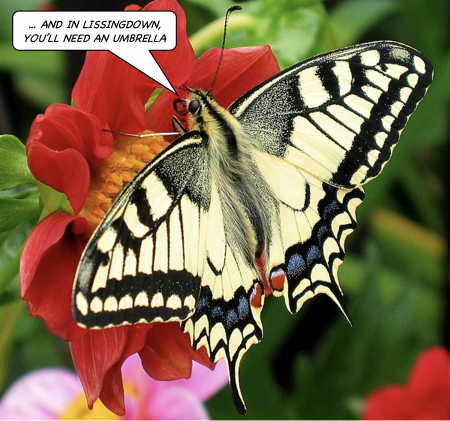Butterfly effect

|
The butterfly effect is a much misunderstood observation of complexity theory - that the behaviour of a complex system is highly susceptible to its initial configuration, and small differences in that initial state — in an ecosystem, the flapping of a butterfly’s wing — may mean the system behaves in vastly — and quite unpredictably — different ways.
This is not the same as saying, as people are prone to, that “a butterfly flapping its wings in the Amazon causes a hurricane in China”.
To the contrary, it is to make the opposite point: these “systems are so complex there’s absolutely no chance of predicting how they will behave.”
Butterfly wing-flaps are discrete independent events. Unless you are prepared to hypothesise some kind of spooky quantum butterfly entanglement, one butterfly flapping its wings will not make more or less likely another butterfly’s decision to do the same, let alone any of the other environmental factors that might cause a tropical storm.
Furthermore, there are millions of butterflies in the Amazon, all discretely — even if not discreetly — wing-flapping, and Gaussian nature of these events will largely cancel each other out, putting butterfly wing-flapping in “Mediocristan” and not “Extremistan”.[1]
If individual-butterfly-wing-flapping-in-Brazil status is a material part of the complex system that generates weather systems in China, then how many other factors are as or more material?
Trillions. Have fun deconstructing the causal chain to see how much of a role your butterfly actually had. Just ten generations dilutes your ancestor’s genetic contribution to your DNA to 1/1024, and in the same as way there is no meaningful sense in which a flighty Brazilian butterfly causes Chinese hurricanes.
See also
References
- ↑ See The Black Swan.